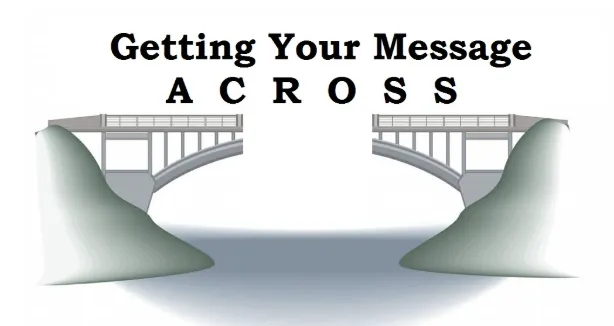
Mastering the Art of Bridging in Media Interviews
Mastering the Art of Bridging in Media Interviews
Bridging: How Smart Spokespeople Stay on Message Without Dodging the Question
If you’ve ever watched a seasoned spokesperson in action, you’ve likely seen the art of “bridging” at work — even if you didn’t know the term. It’s a powerful media training technique that allows you to accept the premise of a reporter’s question, but skillfully pivot to a message that serves your organization.
Good bridging is subtle. Bad bridging sounds like evasion. And great bridging? It keeps your story intact while building trust with your audience.
Let’s break it down.
⸻
What Is Bridging?
Bridging is a technique used in interviews to redirect the conversation toward your key messages. It’s not about avoiding tough questions — it’s about making sure you don’t get stuck in a place that doesn’t serve your purpose.
You answer — but you move the conversation.
Think of it as a verbal steering wheel.
⸻
When and Why to Use Bridging
•When the question is off-topic
•When the question is speculative
•When you’re asked for an opinion, you can’t give
•When you’ve already answered the question and want to advance your narrative
•When you’re nearing a key quote moment, and want your message heard clearly.
⸻
The Anatomy of a Good Bridge
A good bridging line acknowledges the question, respects the journalist’s role, and guides the conversation toward your talking point. It’s not deflection. It’s navigation.
Here are three effective examples of bridging phrases:
1.“That’s a fair question, but what’s important to remember here is…”
Use this when you’re asked about internal politics, blame, or sensitive decisions.
2.“While that’s one aspect, what we’ve been focused on is…”
Use this to acknowledge nuance while reinforcing your priority.
3.“Let me put that into context…”
A great phrase for redirecting speculation into facts or strategy.
⸻
Bridging Without Losing Credibility
Avoid sounding like a politician. If you “bridge” too soon or too often, it looks like you’re dodging. Always begin with a short acknowledgment of the question — even if you can’t answer it directly.
Also, make sure your bridge leads somewhere meaningful. Repeating vague talking points won’t help if they don’t serve the moment.
⸻
Examples in Action
Let’s say you’re a hospital CEO asked about long ER wait times:
Reporter: “Why are patients waiting up to 12 hours to be seen in your ER?”
Bridge: “That’s a real concern, and it’s something we’re actively working on. But it’s also important to recognize the bigger picture — demand on emergency departments across the province has risen dramatically, and we’re responding by hiring more staff and creating better triage protocols.”
⸻
Why Bridging Builds Media Confidence
When spokespeople master bridging, they gain control — not by dominating the conversation, but by guiding it. Journalists still get what they need. And your message doesn’t get lost in the weeds.
⸻
Finally: Bridge With Purpose
Media interviews are often unpredictable. Bridging is your best defence against being led off course — without compromising transparency.
Want to practice bridging techniques with real-time coaching? Reach out, and I can help.
